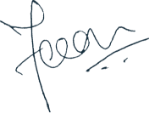‘Lincoln in the Bardo’ review: The best of experimental writing

Lincoln in the Bardo by George Saunders is not about President Abraham Lincoln but his son William, who died tragically at the age of 12 in 1862. It is also a book comprising quotes (accompanied by their citations).
This 2017 Booker winner was my first exposure to an experimental form of writing (though I had earlier read Slaughterhouse-Five and Ulysses which were considered experimental in their times). The novel takes place during and after the death of Lincoln’s son William ‘Willie’ Wallace Lincoln and deals with the president’s grief at his loss.
‘Experimental’ literature utilises unconventional or unorthodox forms to convey meaning and produce an impact. This can mean, for example, constructing a completely non-linear narrative, or creating characters that are aware that they are characters within a story. But bear in mind that a form is always experimental in relation to an earlier form.
When Hemingway’s early short stories were published, they caused a huge tumult because he was disrupting the earlier conventions of what constituted literary language. But now Hemingway’s clipped prose has influenced so many generations of writers around the world, that it has itself become conventional. ‘Experimental writing’ is therefore hard to define because no single definition suffices.
Experimentation in the literary arts is often considered inaccessible. If you are a fan of experimental writing, then you probably enjoy uncovering deep meaning in surprising texts. The plot is not subtle and often shakes up the reader. They bend genres and play with language and form to tell a story in a way it hasn’t been told before. Often it is defined by what it is not rather than what it is. It’s fun because there are no rules and there are infinite possibilities.
If you are a writer and want to improve your skills, experimenting with the extremes of writing helps build confidence. Acknowledged as one of the most influential modern French writers, Raymond Queneau’s Exercises in Style has been part translated, and partly adapted into over 30 languages. It contains 99 versions of the same, very basic story employing a variety of styles, ranging from sonnet to cockney to mathematical formula. Every writer should read this to expand their understanding of literature and how they can go beyond first- and third-person narration.
Translating this book would have been every translator’s ultimate challenge! Another highly recommended book especially for budding writers is The Mezzanine by Nicholson Baker. What makes this 133-page book a classic is that nothing happens in the story. The plot, if you can call it one, is simple: a man buys a pair of shoelaces!
In Yann Martel’s Self, the main character changes gender several times. (In Virginia Woolf’s Orlando the eponymous character continually changes gender, location and historical period!) Martel uses the page in the book in an interesting way: each page is divided into two where on one side are the character’s thoughts and on the other side, is his description.
A novel that I did enjoy but which took a lot of effort to finish was The Interrogative Mood by Padgett Powell. Imagine a book that begins by asking a question – and then continues with one question after another. Many questions were peculiar, some a bit mad and some of them were very thought-provoking. Unlikely though it sounds, it’s a work of real charm.
However, since experimental novels hinge upon innovative and clever forms rather than content, most are difficult to get through and need an open mind and a lot of patience to be enjoyed.

